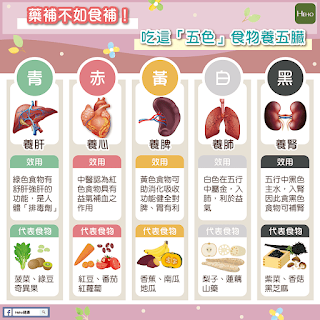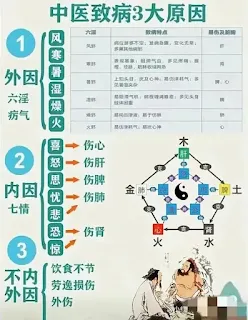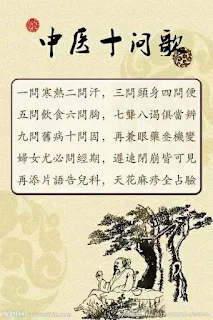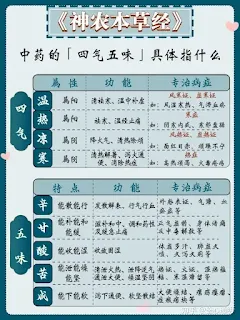Traditional Chinese Medicine
Introduction
Western medicine has traditionally focused on an antagonistic approach, where medications target specific mechanisms to address imbalances or fight pathogens.
- While highly effective, this approach can sometimes lead to side effects due to receptor suppression or saturation.
- Additionally, some medications may cause rebound effects when discontinued.
- Coupled with the rising cost of healthcare and growing burden of chronic diseases, Western medicine has increasingly embraced preventive measures like healthy lifestyles, vaccinations and early disease detection.
- TCM prioritizes preventing disease and promoting overall well-being, aiming for a holistic approach to health rather than just simply treating symptoms.
- The body is viewed as a complex system of interconnected elements, and treatment focuses on restoring balance within that system.
A Figurative Framework
TCM is rooted in a figurative theory, honed primarily through years of clinical experience.
- While it may not always explain the body's working in the same detail as Western physiology, its effectiveness in some areas is undeniable.
The core principle of TCM revolves around maintaining a harmonious balance between Yin and Yang forces (阴阳) within the body.
- In a healthy body, Yin and Yang coexist in a delicate equilibrium. However, illness arises when this balance is disrupted (i.e. excess or deficiency of one or the other).
- Yin, associated with coolness, rest, and passivity, represents a foundation of calm.
- Yang, characterized by warmth, activity, and dynamism, embodies a state of action.
- TCM's holistic approach adds another layer of complexity. Practitioners distinguish between true excessive and deceptive states of Yin or Yang (Eight Principal Syndromes 八纲: 阴阳表里寒热虚实) to determine the most effective treatment approach.
- To illustrate, a Yin deficiency (阴虚火旺) can sometimes make Yang appear excessive. In such cases, nourishing Yin (滋阴) might be the most fundamental approach, in combination with clearing heat (清热).
- 虚则补之,实则泄之。
Compared to Western medicine's more targeted approach of choosing drug for an illness, the Yin-Yang concept offers a broader perspective.
- It can explain why a cough can manifest differently at various times (such as accompanying symptoms, severity and predominant syndrome).
- Furthermore, the Yin-Yang theory shares some similarities with how drugs with different mechanisms of action are used in Western medicine.
The Five-Element Doctrine
TCM goes beyond the Yin-Yang concept to incorporate the Five-Element Doctrine as well. This theory explain how the body's organs are interconnected through a complex web of relationships.
- Promotion (相生): Each element nourishes and supports the next in a cyclical flow.
- Restriction (相克): Each element also exerts a check on the one following it to ensure a balance of power.
- Reverse inhibition (相侮): Excessive of an element strains the element that normally restricts it.
Within the Five Elements system lies the concept of "mother-child relationship" (母子相及). It has 5 conditions:
- When a "mother" element is deficient, it can weaken its corresponding "child" element (母令子虚).
- When a "mother" element is excessive, it can strengthen its corresponding "child" element (母子皆亢).
- When a "child" element is excessive, it cause its corresponding "mother" element also excessive (子病犯母).
- When a "child" element is excessive, it can strain its corresponding "mother" element (子盗母气).
- When a "child" element is deficient, it can deplete its corresponding "mother" element (子不养母).
Within the Five Elements system, the five tastes (五味) and five colours (五色) are believed to nourish and benefit the five Zang-viscera (五脏) respectively.
- 夫五味入胃,各归所喜,故酸先入肝,苦先入心,甘先入脾,辛先入肺,咸先入肾,久而增气,物化之常也。气增而久,夭之由也。
- 豆有五色,各养五脏。绿色养肝、红色补心、黄色益脾胃、白色润肺,黑色补肾。
The Visceral Theory (藏象学说)
TCM classifies the internal organs of the body into 3 kinds.
- The Five Zang-viscera (五脏)
- These organs have the same physiological function of producing and storing essential Qi (精气).
- They include the heart, liver, spleen, lung and kidney (心,肝,脾,肺,肾).
- The Six Fu-viscera (六腑)
- These organs have the same physiological function of receiving, transforming and transporting food and water (受盛和传化水谷).
- They include the gall bladder, stomach, small intestine, large intestine, urinary bladder and San-Jiao (胆,胃,小肠,大肠,膀胱,三焦).
- The Extraordinary Fu-viscera (奇恒之腑)
- These organs are distinct from the Fu-viscera in function.
- They include the brain, marrow, bones, meridians and female uterus (脑,髓,骨,脉,女子胞).
In essence, the TCM concept of the Five Zang-viscera goes beyond the physical organ of Western anatomy, focusing instead on functional concept.
- To illustrate, the TCM spleen represents the entire digestive system and its related function.
Qi and Blood
Qi (气) is considered the vital energy or life force that propels blood and flows throughout the body along pathways called meridians (经脉) and collaterals (脉络).
- Blockages in Qi flow can lead to various imbalances and ultimately, sickness.
Based on its transformation, human Qi can be divided into several types:
- Original Qi (元气) - Transformed from prenatal essence (先天之精) and nourished by postnatal essence (后天之精). It regulates growth, development and reproduction.
- Pectoral Qi (宗气) - Transformed from the combined essence of absorbed nutrients from food and drinks (水壳精气) and inhaled fresh air (清气). It facilitates breathing in the airway and assists blood circulation.
- Nutrient Qi (营气) - Extracted from the refined essence of food and drinks. It nourishes the human body.
- Defense Qi (卫气) - This Qi protects our health, acting as a barrier against external pathogens.
Vital Qi (正气) refers to the body's natural ability to resist the Pathogenic Qi (邪气), preventing us from falling ill.
- Pathogenic Qi (邪气) may originate from external (外感六淫) (climatic influences such as exposure to wind, cold, heat, dampness, dryness and fire 风寒暑湿燥火) and internal (内生五邪) (sources include poor diet, emotional stress, overwork and sedentary habits).
- A proper diet in TCM
- Balanced: 毒药攻邪,五谷为养,五果为助,五畜为益,五菜为充,气味合而服之,以补精益气。
- Adequate quantity: 饮食自倍,肠胃乃伤
- Regular eating schedule: typically 3 meals per day.
- Overwork
- TCM recognizes that overuse and overexertion can harm the body in different ways.
- 五劳七伤: 其中的五劳,既久视伤血,久卧伤气,久坐伤肉,久立伤骨,久行伤筋。
- Exercises
- Western medicine often emphasizes vigorous exercise (for example, running and hiking) to achieve specific physical objectives, such as improving cardiovascular health, building muscle mass or managing weight.
- In contrast, TCM places a greater emphasis on mindful movement (心静与行动的结合) and cultivating internal balance, such as Tai Chi (太极), Five Animal Frolics (五禽戏) and Baduanjin (八段锦).
- 人体欲得劳动,但不当使极耳,动摇则谷气得消,血脉流通,病不得生。
Similar to the Yin-Yang concept, Vital Qi and Pathogenic Qi exist in a dynamic balance.
- 邪去则正自复,正充则邪自却。
Constitution
In TCM, Constitution (体质) is a crucial concept that demands attention.
- It refers to an individual's inherent and relatively stable characteristics. These characteristics are primarily determined by innate heredity (先天遗传), but can also be influenced by acquired factors (后天因素) like diet, lifestyle and environment.
TCM categories people into different constitutions.
- Depending on their constitution, individuals are more susceptible to certain diseases.
- Even when diagnosed with the same illness, people of different constitutions may experience varying symptoms and require distinct treatment plans.
- This concept extends to preventative measures as well, with nourishing method (养生方案) also differing based on constitution.
The Four Pillars of Diagnosis
The four pillars of diagnosis (四诊) in TCM are
- Inspection (望) - Observing the patient's overall mind (神), complexion (面色), appearance (形态) and tongue (舌).
- Listening and smelling (闻) - Listening to the patient's voice, breathing and any body sounds or smelling any subtle body odours.
- Questioning (问) - Detailed conversation with the patient on the medical history and lifestyle habits. May refer "Ten Questions Song" (十问歌).
- Palpation (切) - Feeling the patient's pulse (脉), skin and abdomen.
Treatment Determination based on Syndrome Differentiation
Treatment determination based on syndrome differentiation (辨证论治) is an essential principle in TCM in understanding and treating disease.
- Treatment determination based on syndrome differentiation different both from common "symptomatic treatment" and "treatment according to different disease" in Western medicine.
- In different stages of a disease, there may appear different syndromes; and in different diseases, the same syndrome may appear. So different syndromes in one disease should be treated by different treatments; while different disease, as long as they express the same syndrome, can be treated with the same treatment (同病异治,异病同治).
- "Syndrome" is a summary of the cause, place and nature of a disease, and a situation of mutual conflict between pathogenic factors and resistance.
Importantly, knowledge can be learned, but ability can only be practiced (知识可以学习,能力只能练习).
Chinese Herbs
As the saying goes, "The dose makes the poison" (是药三分毒).
- Chinese herbs are classified into 3 strengths. For instance, herbs classified as "lower" generally have stronger actions compared to "upper" or "middle" herbs, and often used sparingly due to their disruptive effects (上药养命,中药养性,下药治病).
- In principle, Western medicine emphasizes completing a full course of antibiotics to prevent the development of antibiotic resistance and ensure the complete eradication of the infection.
- Conversely, TCM focuses on restoring balance within the body, allowing it to heal naturally and address other symptoms (病有久新,方有大小,有毒无毒,固宜常制矣。大毒治病,十去其六;常毒治病,十去其七;小毒治病,十去其八;无毒治病,十去其九。).
- Remember, Chinese herbs can have side effects too if not used appropriately (凡物有偏,有偏则有用,有偏则有弊。).
In addition to strength, Chinese herbs are also classified according to their nature (四气:寒热温凉) and taste (五味:酸苦甘辛咸) to provide further insights into the therapeutic applications.
TCM frequently utilizes herbal formulas (药方) consisting of multiple herbs, each with a specific role: exhibiting synergistic therapeutic effects or alleviating side effects.
- These herbs are classified as the king (the main ingredient), minister, assistant or ambassador (君臣佐使).
- In contrast, Western medicine often focuses on single, isolated active ingredient to target specific symptoms or pathogens.
Exploring Further
While this explanation provides a basic introduction to TCM, there is a vast amount to delve into, such as palpation (脉诊) and acupuncture (针灸).
Further information can be found in foundational TCM texts like
- The Yellow Emperor's Inner Canon (黄帝内经)
- The Huang's Emperor's Canon of Eighty-One Difficult Issues (黄帝八十一难经)
- The Treatise on Cold Damage Disorders and Miscellaneous Illnesses (伤寒杂病论)
- Shen-nong's Herbal Classics (神农本草经)
- A-B Classic of Acupuncture and Moxibustion (针灸甲乙经)
- Essential Formulas Worth a Thousand in Gold for Emergencies (千金药方)
- Compendium of Materia Medica (本草纲目)
Summary
The wisdom of past medical traditions can pave the way for future advancements.
- Interestingly, Western medicine is increasingly adopting a more holistic approach, aligning with TCM's philosophy of treating the whole person rather than just the disease.
- This trend is evident in fields like cardiorenal metabolic medicine, where the interconnectedness of various systems is being recognized.
Nonetheless, Western medicine has its own strengths that contribute significantly to healthcare.
- Western medicine is firmly rooted in scientific research and experimentation. This allows for a clear understanding of disease processes (pathophysiology) and the development of targeted treatments.
- For example, blood tests and imaging techniques can pinpoint the source of an illness, while medications and surgical techniques can provide rapid relief from symptoms and address the root causes of various diseases.







Comments
Post a Comment